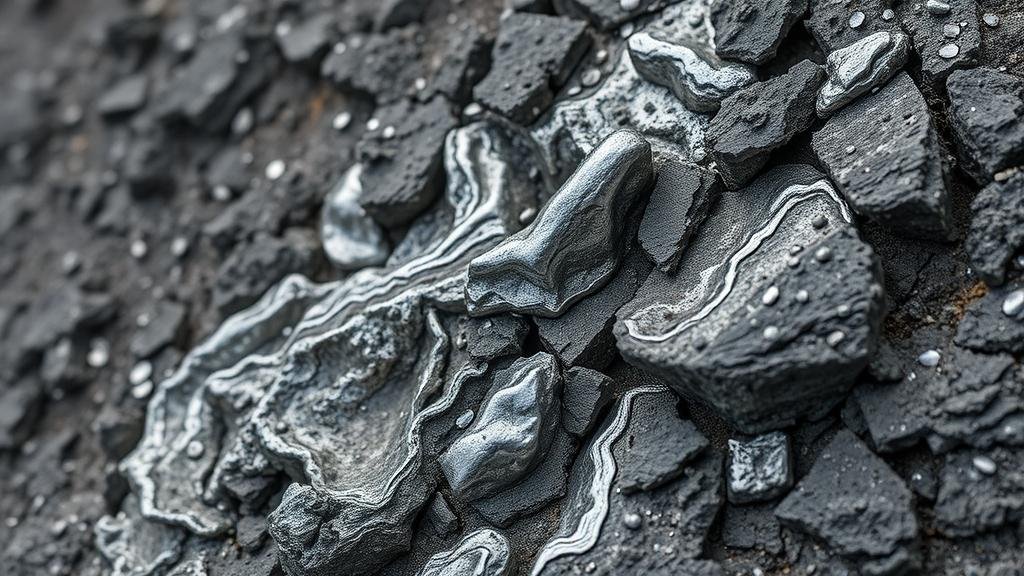Recovering Silver From Weathered Veins in Volcanic Ridges
Recovering Silver From Weathered Veins in Volcanic Ridges
The recovery of silver from weathered veins in volcanic ridges presents an intriguing intersection of geology, environmental science, and mineral extraction technology. Many volcanic ridges across the globe contain rich deposits of silver, often found within the structural veins of these geological formations. This article explores the processes involved in silver recovery, the challenges, and opportunities present in weathered veins, and real-world applications of these extraction methods.
The Geological Context of Silver Deposits
Silver often occurs naturally in volcanic regions, primarily within hydrothermal veins formed during periods of intense heat and pressure associated with volcanic activity. processes of volcanic activity and subsequent weathering contribute significantly to the concentration of silver in these veins.
Weathered veins are specifically altered by both physical and chemical processes which may enhance the accessibility of metals. The primary geological conditions contributing to the formation of these veins include:
- High-temperature hydrothermal fluids that deposit silver and other minerals.
- Subsequent weathering events that cause oxidation and leaching, resulting in the mobilization of silver.
For example, the Calico Mining District in California showcases abundant evidence where volcanic activity led to silver vein explorations, demonstrating the rich potential of this region for silver recovery.
Techniques for Silver Recovery
The recovery of silver from weathered veins employs various techniques based on the geological and chemical characteristics of the deposit. Key methods include:
- Heap Leaching: Involves stacking ore in heaps and applying a leaching solution, typically cyanide, to extract silver. This method is cost-effective and suitable for low-grade ores.
- Gravity Separation: Uses the differences in density between silver and other minerals to separate the precious metal from the ore. This technique is often employed when the silver is found in native form or as part of a high-grade ore.
- Flotation: A process of separating hydrophobic materials from hydrophilic ones, used for recovering silver from sulphidic ores. It involves the addition of chemicals that create a froth to which silver attaches, facilitating its extraction.
Each of these techniques has its advantages and limitations, making the understanding of a site’s specific geological context crucial before choosing a method.
Environmental Considerations
Extracting silver from weathered veins raises important environmental concerns, particularly regarding the use of toxic chemicals and the impact on surrounding ecosystems. implementation of sustainable practices is vital for minimizing ecological damage.
For example, the use of cyanide in heap leaching, while efficient, poses risks of contamination if not managed properly. So, employing eco-friendly alternatives, such as thiosulfate leaching, can help mitigate environmental impacts.
Case Studies and Real-World Applications
Several mining operations have successfully recovered silver from weathered veins in volcanic ridges using a combination of the aforementioned techniques. One notable example is the San Vicente Silver Mine in Bolivia, where extensive vertical weathered zones have been exploited through efficient heap leaching processes.
Also, the impact of these recovery operations on local economies can be significant. improvements brought about by the silver mining industry in terms of job creation and local infrastructure development illustrate the balance that must be maintained between economic benefits and environmental stewardship.
Conclusion and Actionable Takeaways
Recovering silver from weathered veins in volcanic ridges is a complex endeavor that requires a nuanced understanding of geology, mineral extraction technologies, and environmental management. The key takeaways for stakeholders in this industry include:
- Thoroughly assess the geological characteristics of potential mining sites prior to extraction.
- Evaluate the most effective methods for silver recovery based on ore composition and environmental standards.
- Incorporate sustainable practices into mining operations to reduce ecological footprints and enhance community benefits.
By addressing geological, technological, and environmental considerations, stakeholders can optimize the recovery of silver while contributing positively to local communities and ecosystems.



